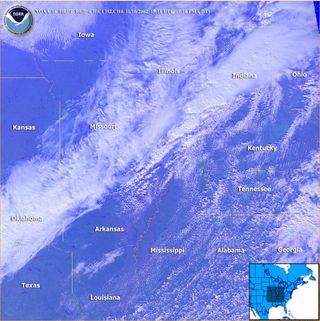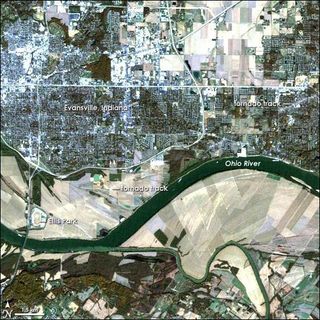
Second Tornado Season a Snooze So Far

Anyone who's lived in Tornado Alley knows that spring is the season to fear the formation of these ferocious storms. But it's not the only season to be alert there's also a so-called second tornado season that hits annually in November.
This year's second season has been a snooze for severe storms so far.
The main tornado season runs from spring to early summer, but tornadoes can form under a variety of conditions and strike during fall and winter. (As one example, a weak tornado hit Brooklyn and Queens in September.)
Traditionally, November is a big month for tornadoes and large thunderstorms, but this year only one tornado has touched down (Nov. 3 in Baton Rouge, La.). Though the first half of the month has been quiet, the dry spell is not all that unusual, and more severe weather could be on the way, forecasters say. [Related: See storm chasers at work].
During this time of the year, nighttime tornadoes are a big risk since the days are shorter. November has averaged four tornado-related fatalities per year since 1950, the most for a late-summer or fall month, according to the Storm Prediction Center in Norman, Okla.
November twisters
Fall and spring are both transitional periods where masses of warm and cool air are more likely to collide and create the thunderstorms that can spawn tornadoes.
Sign up for the Live Science daily newsletter now
Get the world’s most fascinating discoveries delivered straight to your inbox.
Tornadoes form where warm moist air is trapped underneath a layer of cold, dry air. The strongest tornadoes often form when the wind at around 10,000 feet (3,000 meters) above the ground blows in a different direction than the surface wind. In the spring, warm air rising in the storm system hits this so-called wind shear and is pushed from a vertical motion to a horizontal motion, creating a strong rotation.
In the fall, wind shear returns across the United States as the jet stream a fast but narrow air current moves back south after a summer spent up north. Warm, moist air is still at the surface.
"Essentially, the fall season occurs for the same reason the spring season does," said Harold Brooks of the National Weather Service. The big difference between the two tornado seasons is that the temperatures in that top layer are typically a little warmer, for a given surface temperature, in the fall than spring, Brooks told OurAmazingPlanet. As a result, the atmosphere does not have as much potential energy and therefore fewer storms strike during the fall.
November tornadoes tend to be more common in the lower Mississippi valley, including states such as Louisiana, Arkansas, and Mississippi. This is because moist air from the Gulf Coast can more easily reach these states, while it may be blocked from spreading elsewhere, said Robert Henson, meteorologist with the National Center for Atmospheric Research.

A break in the action
About eight days after the Nov. 3 tornado, a severe thunderstorm hit Greenville, Texas quite a long dry spell for the storm-prone month.
The lull in severe storms isn't all that unusual, according to Greg Forbes, The Weather Channel's severe weather expert, writing in his blog. A seven-day lull was the average for November over the last decade. A lull of more than nine days is unusual, and a 10-day lull during November has happened only once over the last decade, according to Forbes.
The most recent lull was caused by a cool, dry high-pressure system dominating the United States east of the Rockies. This slowly moving system blocked moist air from moving back in from the Gulf of Mexico. Moisture is a key ingredient for tornadoes to form.
Tornadoes can strike during any time of the year, but they are less common during the winter. Only five tornado-free months have been recorded since 1950, and three of those were winter months, according to the National Weather Service.
The longest recorded tornado dry spell lasted 57 days, from Sept. 18 to Nov. 13, 1952, according to the National Weather Service. However, tornadoes may have been underreported in those days. A 52-day tornado-free stretch was reported in 1986.
- The World's Weirdest Weather
- In Images: Storm Chasing Scientists
- Skyscraper Storms: 7 Big City Tornadoes
